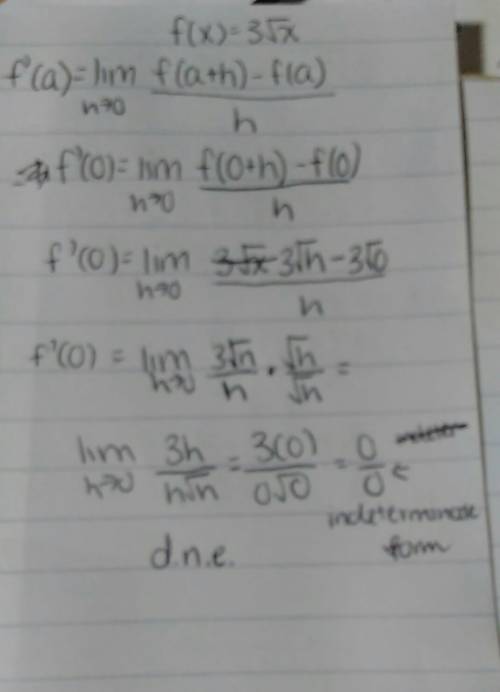
Mathematics, 08.07.2019 09:00, carp3334
Consider the following equation: f′(a)=limh→0 (f(a+h)−f(a))/h let f(x)=3√x if a≠0, use the above formula to find f′(a)= show that f′(0) does not exist and that f has a vertical tangent line at (0,0)

Answers: 1
Other questions on the subject: Mathematics

Mathematics, 21.06.2019 18:00, ineedhelp2285
Yesterday i ran 5 miles. today, i ran 3.7 miles. did my percent increase, decrease or is it a percent error? plz i need
Answers: 2

Mathematics, 21.06.2019 19:30, abigailstolp
Find the domain of the following expression: 1/(√x)-2
Answers: 1

Mathematics, 21.06.2019 21:30, noelia2001guzman
Madeline takes her family on a boat ride. going through york canal, she drives 6 miles in 10 minutes. later on as she crosses stover lake, she drives 30 minutes at the same average speed. which statement about the distances is true?
Answers: 3

Mathematics, 22.06.2019 00:30, byrdkellykellybyrd
Suppose that the function f is defined. , for all real numbers, as follows. _ \ 1/4x² -4 if x≠ -2 f(x)=< /_-1 if x=-2 find f(-5), f(-2), and f(4)
Answers: 3
Do you know the correct answer?
Consider the following equation: f′(a)=limh→0 (f(a+h)−f(a))/h let f(x)=3√x if a≠0, use the above...
Questions in other subjects:

Social Studies, 01.01.2022 14:00



Mathematics, 01.01.2022 14:00


Advanced Placement (AP), 01.01.2022 14:00










